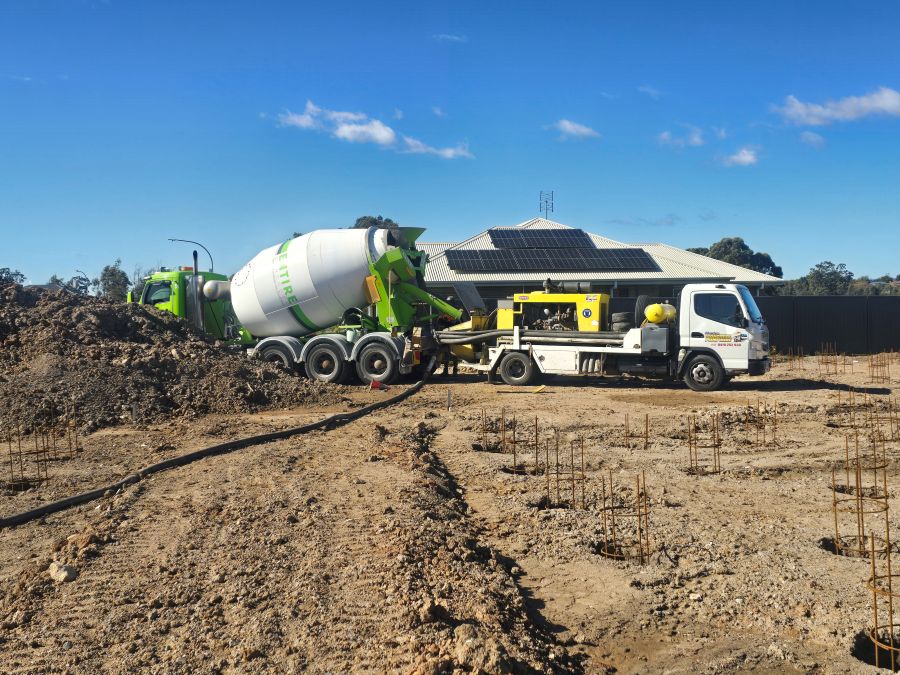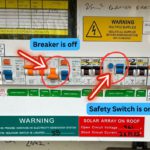Key Strategies for Ensuring Optimal Safety in Concrete Pumping Operations for 2025
As we approach 2025, enhancing safety in concrete pumping is of utmost importance. A comprehensive approach involving detailed training programs, thorough equipment inspections, clearly marked exclusion zones, and meticulous pre-start planning is essential. Recognizing the inherent risks tied to concrete pumping and adhering strictly to safety guidelines will significantly reduce the potential for accidents, thus facilitating timely completion of construction projects. By prioritizing these essential safety measures, we foster a secure work environment that boosts both efficiency and productivity, laying a solid foundation for successful project execution and delivery.

Recognizing and Mitigating Common Risks in Concrete Pumping Operations
According to SafeWork NSW, personnel involved in concrete placement encounter substantial risks during the setup and operation of concrete pumps. Among the most prominent hazards are:
- Unstable ground conditions or improper setups on slopes, which can result in severe accidents.
- Operating equipment beyond its design specifications, which considerably raises the risk of mechanical failures.
- Working near overhead power lines, thereby increasing exposure to dangerous electrocution hazards.
- Potential collisions with trucks, structures, or on-site workers, which could lead to serious injuries.
- Issues such as hose whip and line surges, creating hazardous situations if not properly controlled.
- Unexpected equipment failures and blockages that may hinder workflow.
- Exposure to crush zones, diesel fumes, and elevated noise levels that can negatively impact health.
- Hazards related to slips, trips, and confined spaces that may lead to significant injuries.
These risks are not merely theoretical; they often manifest when safety protocols are neglected or inconsistently applied. Therefore, our unwavering dedication to prioritizing vital safety measures on-site ensures that each worker is comprehensively briefed and adheres to established protocols, significantly enhancing the safety of the work environment.
1. Prioritize Comprehensive Training and Certification for All Team Members
Given the high-stakes nature of operating concrete pumps, it is critical that operators are subjected to rigorous handling requirements. In NSW, operators are mandated to possess:
- An HR licence for operating boom trucks, confirming their qualifications and expertise.
- Verified VOCs (Verification of Competency) to ensure their skills are validated.
- Training focused on hazard recognition and a thorough understanding of emergency stop procedures.
Additionally, hose handlers must receive comprehensive briefings to avoid standing in discharge zones, enabling them to identify blockages swiftly. This training is essential to maintain operational safety and minimize the risk of accidents during concrete placement.
2. Establish Clearly Defined Exclusion Zones to Strengthen Safety Protocols
Concrete under high pressure moves rapidly and can pose extreme risks if released unexpectedly. Therefore, it is vital to establish well-marked safety zones around the hose and boom at all times. Key safety measures to implement include:
- Utilizing barriers and flagging to clearly define risk areas surrounding the pumping operation.
- Ensuring personnel do not stand in front of the discharge area to prevent injuries.
- Restricting movements underneath booms to mitigate the risk of accidents.
3. Perform Detailed Equipment Inspections Before Every Concrete Pour
Every concrete pumping operation begins with a meticulous equipment inspection. At Hunter Concrete Pumps, we conduct thorough checks on:
- Hoses and reducers to ensure they are functioning optimally.
- Couplings and clamps to verify secure connections.
- The integrity of the boom and seals to prevent potential leaks.
- Primer levels, ensuring the pump operates smoothly and effectively.
- Emergency shutoff systems to ensure immediate response capabilities in case of an incident.
No operation is permitted to commence unless the pump successfully passes all inspections, reinforcing our steadfast dedication to safety and operational efficiency in all concrete pumping activities.
4. Designate a Lead Operator for Enhanced Coordination and Communication
Effective communication is critical to the success of concrete pumping operations. Each crew should appoint a lead operator responsible for overseeing the pour and ensuring seamless coordination with:
- Agitator drivers to synchronize operations for an efficient pour.
- Hose handlers who are tasked with managing the flow of concrete safely and effectively.
- Site supervisors to ensure strict compliance with site regulations.
- Concreters and finishers to achieve the desired project outcomes.
This clear chain of command is essential for preventing mistakes and misfires, ultimately enhancing both the safety and efficiency of the entire operation, ensuring that all team members are aligned.
5. Kick Off Every Pour with a Detailed Safety Briefing for All Crew Members
Before initiating pump operations, it is critical for the crew to discuss several key topics, including:
- Site access and hose routing for effective flow management.
- Emergency response plans and first aid protocols to guarantee preparedness.
- Truck staging and washout protocols to maintain site cleanliness and organization.
- Identifying slip risks and ensuring proper use of PPE (Personal Protective Equipment) for all crew members.
- Clarifying the roles of spotters where necessary to further enhance safety protocols.
At Hunter Concrete Pumps, we diligently enforce these protocols on every job, without exception, to ensure the safety of our crew and uphold the integrity of the project.
Understanding the Critical Importance of Safety in Concrete Pumping Operations
Ensuring safe concrete pours is not only vital for protecting your crew but also essential for safeguarding your project timeline, budget, and overall reputation. A lapse in safety can lead to injuries, project delays, and potential regulatory scrutiny, making these risks unacceptable. We strictly comply with SafeWork NSW guidelines for concrete pumping on every job. Our operators are not only thoroughly trained but also licensed and insured, ensuring that when you choose our services, you are working with a provider that prioritizes safety in every aspect of the process.
Is It Necessary to Employ Spotters or Safety Personnel for My Concrete Pour?
For both civil and commercial job sites, the answer is a resounding yes; spotters or safety personnel are vital for maintaining high safety standards. However, for residential projects, our dedicated pump crews are highly trained in effectively managing safety zones, ensuring that the site remains secure throughout the operation. We will communicate any specific requirements during the quoting process to ensure clarity and compliance.
What Are the Main Safety Risks Associated with Concrete Pumping Jobs?
The three primary risks include untrained hose handling, insufficient access planning, and the lack of defined exclusion zones. We proactively tackle all three of these critical issues before the concrete pour commences, guaranteeing a safer working environment for everyone involved in the operation.
Achieve Seamless and Safe Concrete Pours with Our Professional Expertise
Concrete pumping safety extends beyond mere compliance with regulations; it emphasizes the importance of completing the job without injuries or delays. When your team is well-versed in safety procedures and your operator arrives fully equipped and prepared, the concrete pour can progress smoothly, quickly, and without complications, facilitating successful project outcomes and client satisfaction.
Concrete Pump Hire
The Article: Concrete Pumping Safety Protocols: 2025’s Top 5 Tips first appeared on https://writebuff.com
The Article Concrete Pumping Safety Tips: Top 5 Protocols for 2025 Was Found On https://limitsofstrategy.com
The Article Concrete Pumping Safety Tips for 2025: Top 5 Protocols First Appeared ON
: https://ad4sc.com

